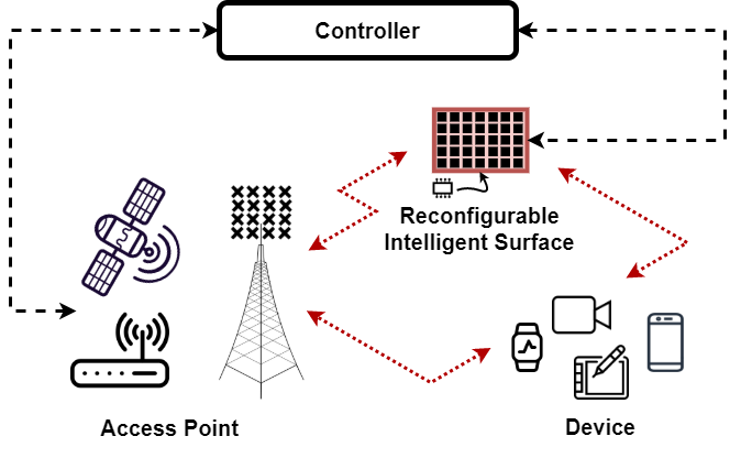RIS: A Key Building Block for 6G
 Wireless communications, or the transmission and reception of radio waves, have revolutionized the world, to the extent that it is nearly impossible to envision our day-to-day lives without them.
To enable transfer of information between a transmitter and a receiver over the air, one must deal with the uncertain and determinantal impacts the wireless channel has over radio signals. Today’s
wireless systems are built around the principles of wireless channel adaptation, meaning sophisticated design mechanisms at the transmitter, receiver, or both that attempt to deal with the wireless
channel impairments. Following several decades of work, wireless systems such as 5G, and technologies therein, such as massive MIMO, can deliver unprecedented performance.
Wireless communications, or the transmission and reception of radio waves, have revolutionized the world, to the extent that it is nearly impossible to envision our day-to-day lives without them.
To enable transfer of information between a transmitter and a receiver over the air, one must deal with the uncertain and determinantal impacts the wireless channel has over radio signals. Today’s
wireless systems are built around the principles of wireless channel adaptation, meaning sophisticated design mechanisms at the transmitter, receiver, or both that attempt to deal with the wireless
channel impairments. Following several decades of work, wireless systems such as 5G, and technologies therein, such as massive MIMO, can deliver unprecedented performance.
Despite the great successes to date, the rapid changes in traffic demand require innovative sustainable wireless solutions beyond deploying traditional network infrastructure, which comes at a high cost to design, implement, deploy, and operate. An emerging concept in this direction that has received a lot of attention in the wireless community is “smart radio environments,” which involve going beyond adaptive wireless communications to shaping and controlling the radio environment in a goal-oriented way. The main technology to achieve this is known as reconfigurable intelligent surface (RIS), which also goes by several other names such as reflecting intelligent surfaces, smart repeaters, and holographic radios.
Understanding RIS
RIS is a completely new type of network node, different from conventional fully stacked cells, relays, and repeaters. It has a conformal structure engineered to have properties that enable the network to dynamically shape and control the radio waves impinging on the surface. RIS can be made of a large array of passive scattering elements called unit cells, which can be configured by the network to achieve desired signal reflections, refractions, focusing, collimation, modulation, and their combinations.
RIS can be implemented using mostly passive components and as such the cost to produce, deploy, and operate RIS may be lower compared to fully stacked cells, relays, and repeaters. These smart radio surfaces may take any shape or be integrated onto objects, providing ease and flexibility for deployment. RIS can be targeted for both indoor and outdoor usage, including at offices, airports, and shopping centers, as well as on lamp posts and advertising billboards. RIS uses mostly passive components, and therefore it may result in low energy consumption, making it a sustainable, environmentally friendly technology solution. RIS can be configured to operate at any part of the radio spectrum, including frequencies from sub-6 GHz to THz. It is anticipated tools from artificial intelligence and machine learning (AI/ML) can serve as key enabling tools for RIS operation and optimization.

Figure 1. Illustrative diagram of RIS, a new type of system node with smart radio surface technology with a response can be adapted to the status of the propagation environment through control signalling.
click to enlarge
For these reasons, RIS is envisioned as a promising candidate enabling future wireless technology for the control of the radio signals between a transmitter and a receiver in a dynamic and goal-oriented way. It has the potential to change the wireless environment from a passive to an intelligent actor. This has motivated a host of potential new use cases targeted at improving various systems’ KPIs, such as capacity, coverage, positioning, sustainability, and security. In addition to improved performance, RIS could enable new wireless applications such as sensing, localization, and ambient backscattering. Because of these benefits and possibilities, RIS is expected to serve as a key technology in future wireless systems, including 6G.



















